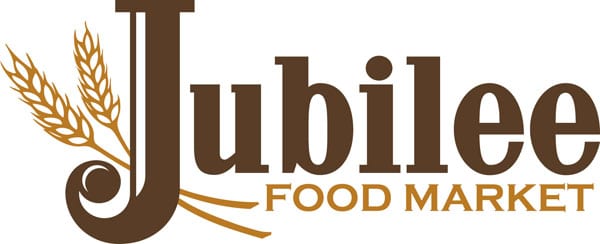
January 31, 2019; Dallas Business Journal
Grocery is a tough business, even if you’re big. Nonprofit grocery stores serving low-income neighborhoods are even tougher to sustain, but that doesn’t stop passionate people in a variety of places from trying.
The latest effort, sponsored by a large Christian-anchored community development organization (City Square) and a small grassroots advocacy group (For Oak Cliff) is focused on a south Dallas food desert, a term defined by the US Department of Agriculture for low-income communities in which there is no grocery store within a mile (in urban areas) or 10 miles (in rural areas). In Oak Cliff, if you don’t have a car, a trip to buy groceries can take more than an hour. In 2016, the city offered at least $3 million to any grocery willing to sell fresh produce and healthy food in south Dallas, but found no takers. With plans to open in 2020, the Oak Cliff store organizers say they have been researching similar nonprofit grocery store concepts from Waco, Baltimore, and Washington, DC. They believe their model can be a game changer in Dallas.
But how do nonprofits succeed? The grocery business is low margin, highly competitive, cash and debt intensive, and fluid, with stores frequently opening, closing, moving, merging, and getting sold off. Supermarket stores average 43,000 square feet, enormous facilities that can bring in big revenue and serve lots of customers in higher density and higher income areas. The nonprofit groceries we know about are most often less than 7,000 square feet, seek to serve a low-income clientele, frequently lack sector-specific expertise, and certainly don’t have ready access to capital markets.
Sign up for our free newsletters
Subscribe to NPQ's newsletters to have our top stories delivered directly to your inbox.
By signing up, you agree to our privacy policy and terms of use, and to receive messages from NPQ and our partners.
The paths are not easy, but some nonprofits have had at least relative success:
- Membership subscription and in-kind support: About 100 miles from Dallas, the nonprofit Mission Waco bought, renovated, and now operates Jubilee Food Market, Mission Waco has a $4 million budget and employs 32 full-time and 39 part-time staff. Projecting that they needed to raise $488,000 to fully underwrite the project, this nonprofit offered “OASIS shares” (Opportunity Advancing Social Innovation Stock) at $25. They estimated they’d need to sell 19,525 shares—that would cover remodeling, first-year startup, staff, and inventory, and the building of a hydroponic greenhouse to grow fresh produce and to save on stocking costs. By the time of the grand opening, 362 donors had given $653,133 in cash and $255,329 via in-kind donations. Mission Waco plans to actively rely on donations and grants to continue to operate the store. They now have two years under their belt.
- In-kind donations and leveraging food stamps: In east Baltimore, the Salvation Army is behind the recently opened DMG Foods. Built in front of its distribution center in a neighborhood comprising public housing tenants, Johns Hopkins students, and seniors who grew up there, this nonprofit grocery relies on donations of nonperishable food from the Maryland Food Bank, price cuts from distributors, discounts from the power company, and donated back-office services from the Salvation Army. The store’s goal is to get 300 customers a day. Each week, it offers free items to food stamp (officially SNAP, the Supplemental Nutrition Assistance Program) recipients to draw in more customers. And SNAP is key to its business strategy—DMG plans to double the amount of food that customers can purchase with SNAP benefits, aka the Double Up Food Bucks program.
- Volunteer labor, grants, and a community vision: Good Food Markets is planning to open a second grocery this year in Washington DC’s Ward 8, following a model set by their three-year experiment in another low-income neighborhood. They attribute their staying power to the philosophy of knowing the store “had to be more than just a store”—doing community surveys to understand residents’ food buying decisions, holding cooking and health education classes, and employing local residents. The store is small, at 2,000 square feet, and uses volunteers in addition to its local staff. The second store, projected at 3,800 square feet, will partly be financed through an $880,000 grant from the city as part of a broader affordable housing project.
Nonprofit groceries do not work everywhere, In Durham, North Carolina, despite the impressive track record of parent TROSA in starting and sustaining social enterprises, which contribute more than half of this nonprofit’s approximately $18 million annual budget, the TROSA Grocery, which bore the slogan “Good Food, Close to Home,” closed after two years, notwithstanding a city grant that covered 80 percent of the renovation costs, and a rent-free arrangement from the building’s owners. TROSA lost $100,000 in operating costs before it shut down.
Rural communities are also experimenting with nonprofit-owned groceries. In 1,500-person Plains, Kansas, where the nearest grocery is 14 miles away, the Community Enhancement Foundation purchased a 12,000 square-foot facility with funds from grants and donations and is now looking for more grants to develop the store, along with a demonstration kitchen for teaching healthy cooking and providing incubator space for locals to make and sell homemade goods. The store will partner with the nearest pharmacy to provide a pick-up service, since there is no local drugstore. They also hope to provide a transportation service, in-store shopping assistance, and aid helping their growing elderly population unload groceries in their homes.
Bottom line, nonprofit groceries face daunting challenges, even if owned and nurtured by a strong parent organization. Not only are they operating in a notoriously tough industry with razor-thin margins on often perishable products, these mission-based businesses have the additional mandate to simultaneously change consumers’ attitudes about healthy eating. Community, donor, and volunteer support are all crucial, as is staying power. It may take longer than the three-to-five years one typically needs to get a new grocery store into the black.—Debby Warren













